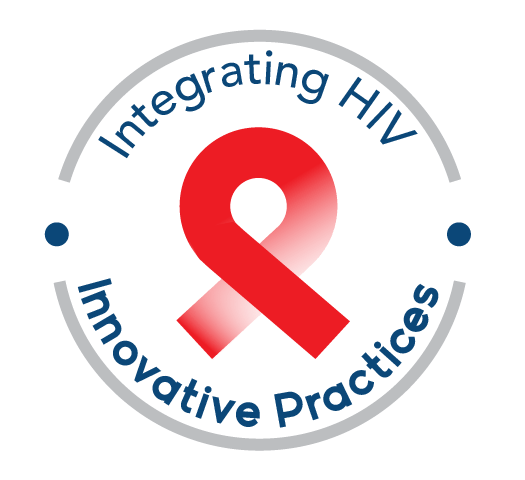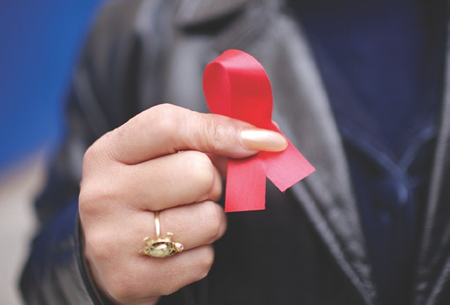
 30 to 35 minutes
30 to 35 minutes
 PLAN module
PLAN module
Summary
This module provides an overview and will foster discussion about the Social Marketing Campaigns/Social Networking Channels model of care. Participants will discuss the pros and cons of this model of care in targeting the marginalized and underserved PLWHA they wish to serve.
Materials Needed
- Computer and compatible LCD projector to play the PowerPoint presentation
- Notes created during previous modules
- Paper and easel(s)
- Colorful markers
- Tape for affixing paper to the wall as necessary
- Invited guest speaker(s), as needed.
Module 8 features teaching material, guided group discussion, and a group activity.
If staff is unfamiliar with general terminology used to discuss social media or, as a complement to this module, suggest printing out and distributing HRSA’s “Social Media and HIV” newsletter (particularly pages 4 and 5 with terminology), accessible at HRSA Care Action. June 2011.
Slide #63: Training Refresher

Before we begin, let’s review the pros and cons of the previous model we reviewed.
Slide #64: Social Marketing Campaigns/Social Networking Channels

Social marketing uses commercial advertising techniques to “sell” HIV prevention, testing, treatment, and care through messages targeted to specific populations.
Television and radio advertisements and promotional materials are often repurposed and circulated online through social networks, such as YouTube, Facebook, and Twitter.
Slide #65: Social Marketing Campaigns
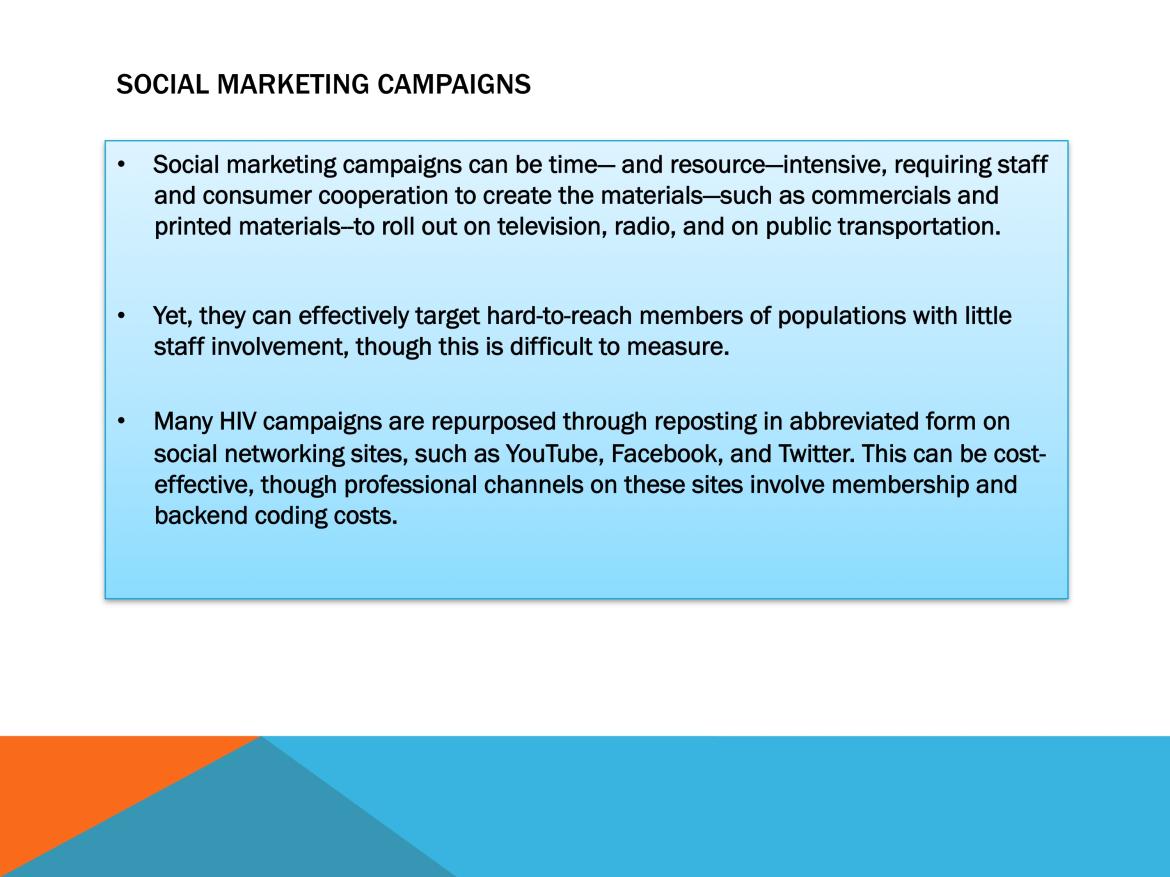
Refer to your clinic’s past social marketing/social networking campaigns, as appropriate.
Social marketing campaigns can be time- and resource-intensive, requiring staff and consumer cooperation to create the materials—such as commercials and printed collateral—to roll out on television, radio, and public transportation.
Yet, they can effectively target hard-to-reach members of populations with little staff involvement, though this is difficult to measure.
Many HIV campaigns are repurposed through reposting in abbreviated form on social networking sites, such as YouTube, Facebook, and Twitter. This can be cost-effective, though professional channels on these sites involve membership and backend coding costs.
Have you seen any marketing materials take on a new life online? If so, how?
Slide #66: Social Marketing/Social Networking Evaluation Challenges
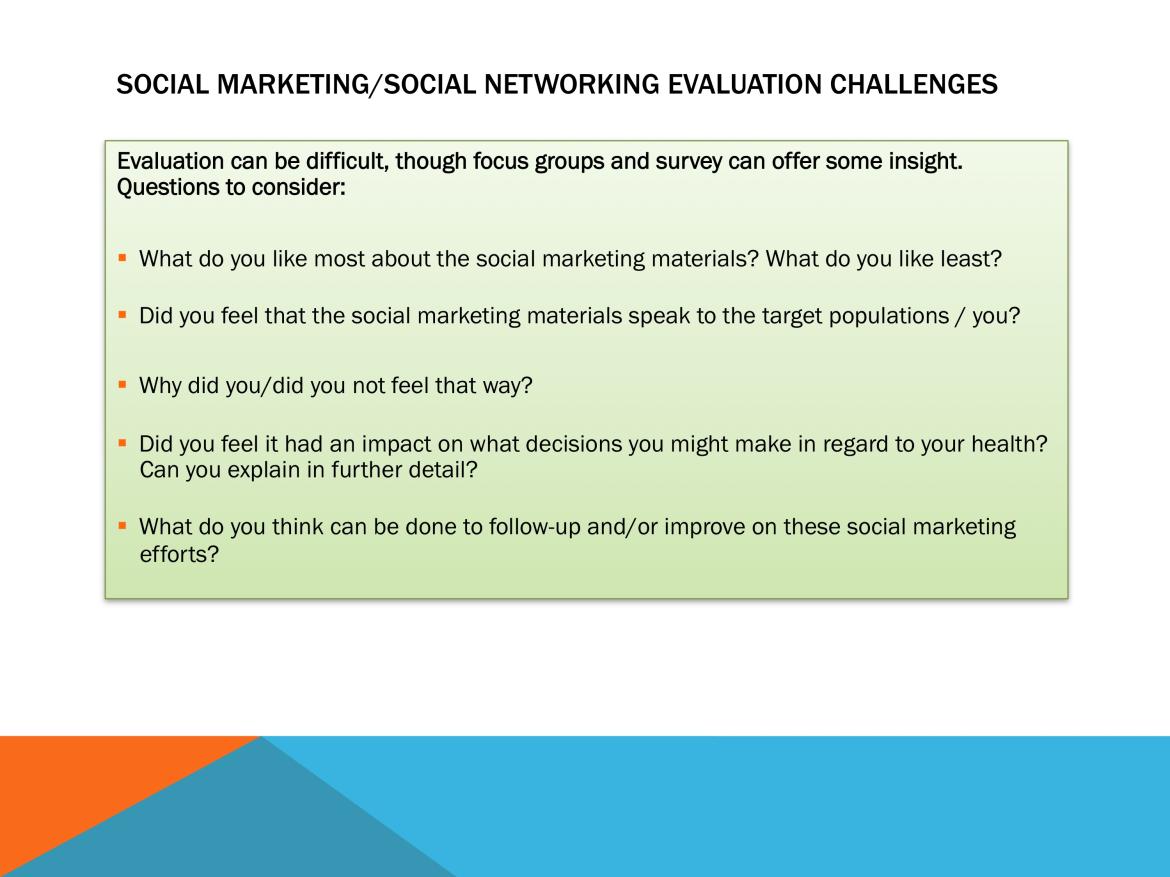
Evaluation can be difficult, though Web site traffic metrics, focus groups, and surveys can offer some insight.
Below are some questions that may glean insight from your audience:
- What do you like most about social marketing materials? What do you like least?
- Did you feel that social marketing materials speak to the target populations? You?
Slide #67: Social Networking and HIV/AIDS Care: A Work in Progress
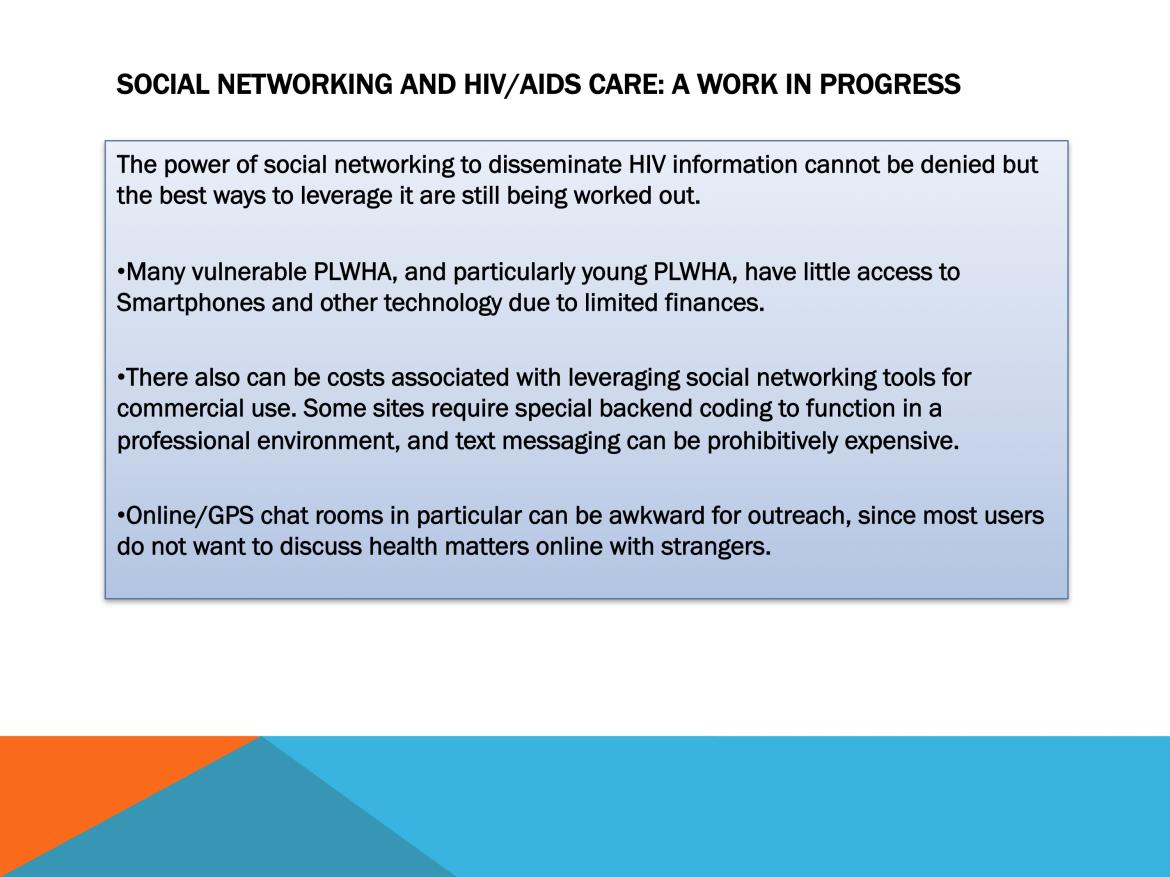
Refer to your clinic’s past social marketing/social networking campaigns, as appropriate.
How do you think social marketing and social networking might benefit our clinic? What are the pros and cons of such an approach?
Some things we need to consider:
- Staffing: Who would handle our social marketing/social networking activities?
– We might have to turn to younger staff members. While technology savvy, these staff members often require greater oversight, which can be difficult in a virtual atmosphere. Who would oversee them? - Financial considerations: How will we pay for these social marketing efforts?
– Will they appear on television, radio, and/or print?
– Will we need to upgrade our presence on social networking sites, like YouTube, Facebook, and Twitter? These are free to join, but often require expert backend coding to function appropriately in a business environment.
– Text messaging, while another powerful way to connect with clients, may also be expensive or time-consuming. - Security can be a concern. We may need to develop a security protocol in dealing with patients in a “social setting” online.
– Do we want to be “friends” with our clients or vice versa, whether through our clinic’s page or our personal accounts?
– Are we going to approach patients in online chat rooms? Those can be awkward, since most users do not want to discuss health matters with strangers. - Who is going to see the information we disseminate? Many vulnerable PLWHA, and particularly young PLWHA, have little access to Smartphones and other technology due to limited finances. They also are less likely to pick up social marketing information.
Lead the group evaluation discussion on whether this model of care will work for the clinic. Have participants refer to the Model of Care Evaluation Handout from Module 3.
Tape pieces of paper with the model of care’s title on each.
Slide #68: Group Module Evaluation

Read each question/statement and then write down everyone’s thoughts, questions, suggestions, etc. down on paper.
- Can this model of care be readily integrated within the clinic’s current operations and help it reach targeted populations of PLWHA?
- Does the clinic already use this model of care, perhaps in a slightly different form?
- Can the clinic satisfy all requirements for this model of care?
- What funding streams, staffing, materials, and other resources are necessary to implement this model of care? Does the clinic have access to these? If not, how will it access them?
- How will buy-in be secured within the clinic?
- Will the implemented model of care be promoted to potential patients? If so, how? Online through social networks? Word of mouth?
- Does this model of care help the clinic identify and engage targeted PLWHA populations into care?
- Compare the pros and cons of this initiative with those of the modules.
Slide #69: Final Evaluation
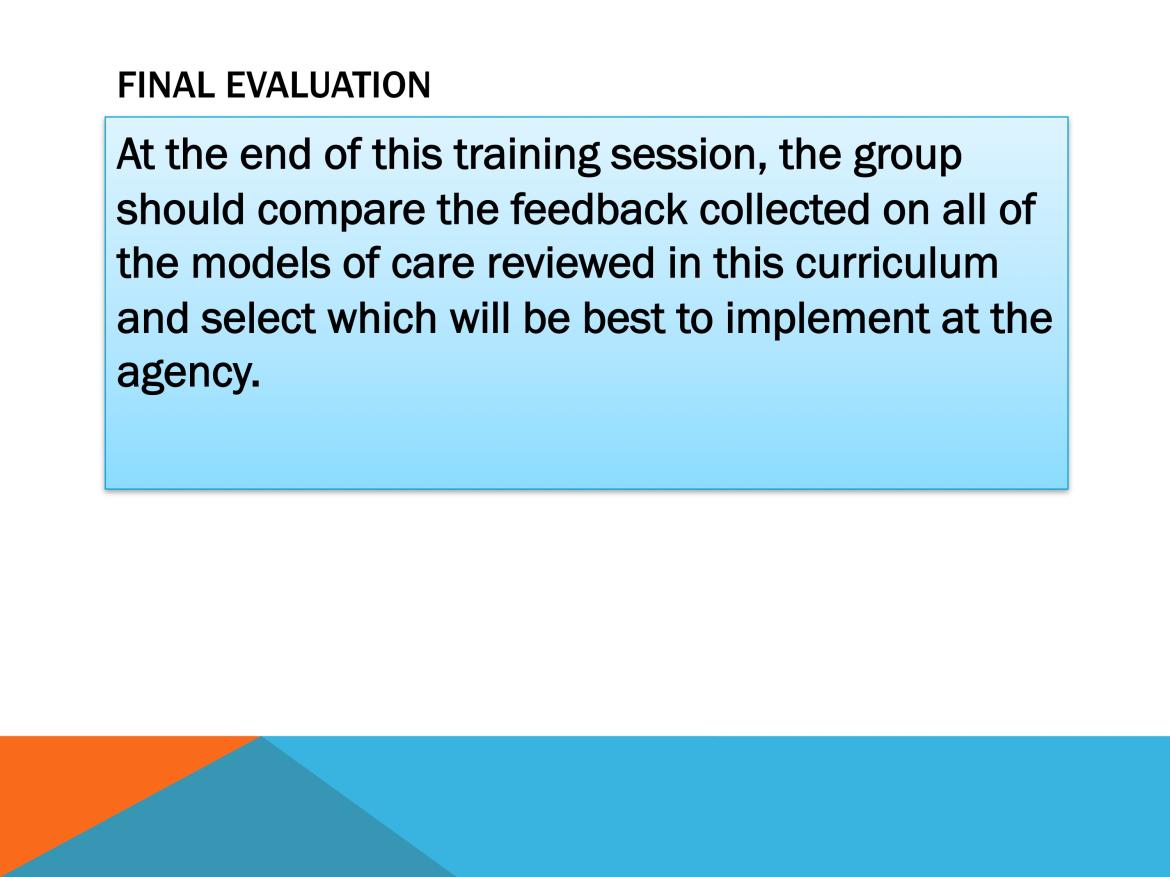
At the end of this training session, the group should compare the feedback collected on all of the models of care reviewed in this curriculum and select which will be best to implement at the agency.
If more than 10 people are present, the Facilitator may split participants into two or three groups to discuss the questions above and write their thoughts on paper. After a few minutes, the Facilitator should reconvene participants. Representatives from each group will explain their colleagues’ thoughts.
Save the notes from this and previous modules for reference in future sessions.
